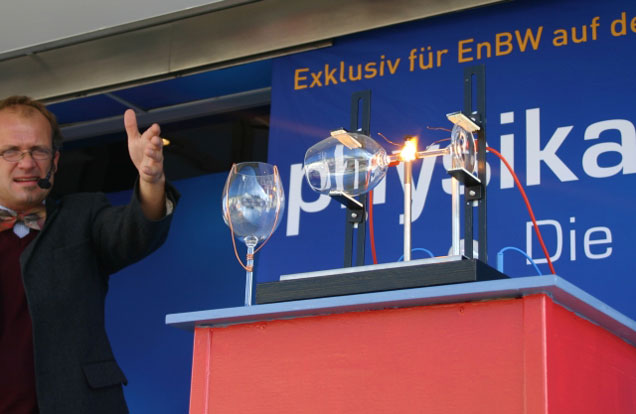A wine glass is connected to the mains electricity by two wires which are attached to its stem, 2cm apart. At room temperature no current flows. Then the stem between the wires is heated with a blow torch until it starts to glow red. Now the blow torch can be removed, and the brightness of the wine glass increases on its own until it glows bright white. The heat becomes so great that the glass finally melts and drops down.
How does it work?
As a solid, glass is an insulator, because the movability of its ions is extremely low. At higher temperatures the ions can move faster allowing a current to flow. The friction between the moving ions produces enough heat to eventually melt the glass stem.





























































































